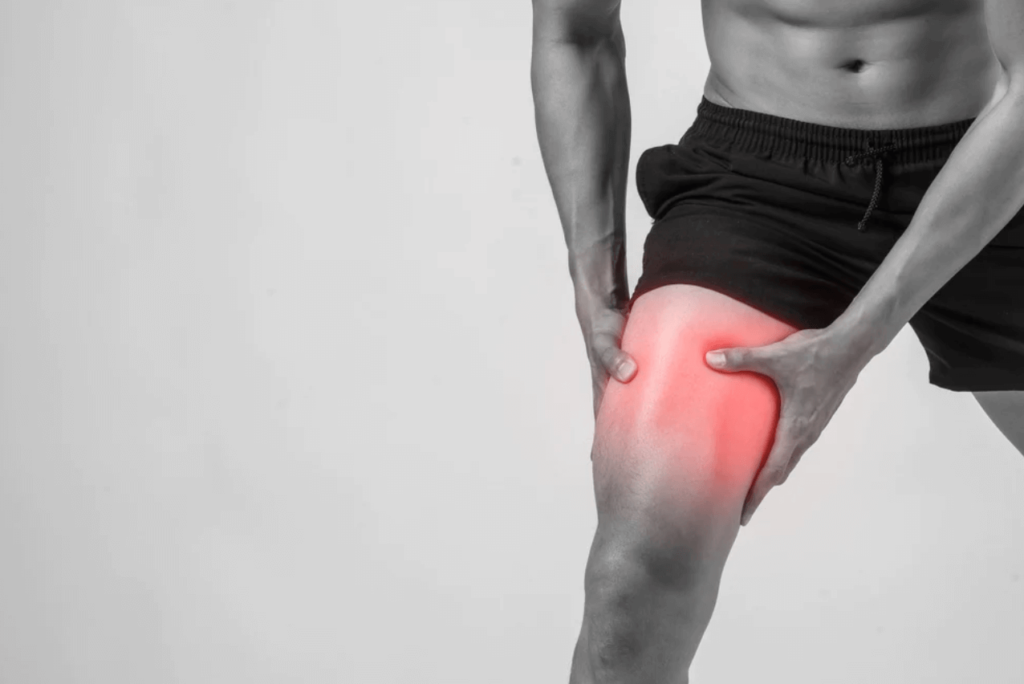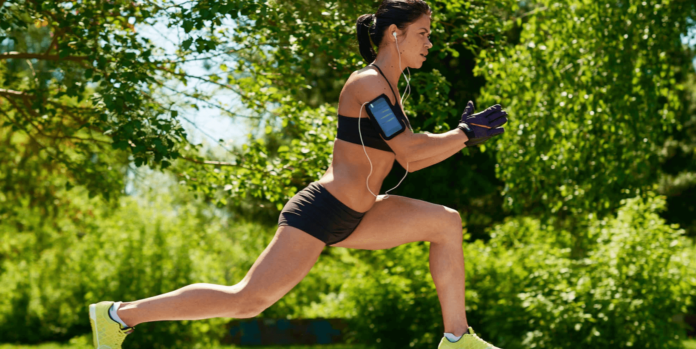After an intense leg day at the gym, your muscles may be begging for rest, but incorporating running into your post-leg day routine can offer a plethora of benefits. However, it’s essential to understand the potential challenges and strategies to optimize your recovery for a successful and injury-free running experience. In this article, we will delve into the importance of running after leg day, recovery after leg day, explore the benefits and drawbacks of running after intense leg workouts, provide tips for optimizing recovery, discuss targeted leg workouts for runners, explore running techniques and strategies, debunk the myth of running “killing gains,” and emphasize the need for balance and personalized approaches to achieve overall fitness goals.
Importance of Recovery after Leg Day:
Recovery is a crucial aspect of any exercise routine and holds even more significance after a rigorous leg workout. Leg day workouts often target major muscle groups, such as the quadriceps, hamstrings, calves, and glutes, resulting in micro-tears in the muscle fibers. Proper recovery allows these muscles to repair and grow stronger, preventing injuries and enhancing overall performance.
Potential Challenges of Running after Intense Leg Workouts:
While incorporating running into your post-leg day routine can be advantageous, there are a few considerations to keep in mind. Running can further fatigue already exhausted leg muscles, potentially hindering the recovery process and increasing the risk of injury. Balancing the need for cardiovascular training with the importance of muscle recovery poses a unique challenge that requires careful planning and a customized approach.
Balancing Cardio and Strength Training Goals:
Finding the perfect balance between cardio and strength training goals is crucial to achieving optimal results. For runners, maintaining cardiovascular endurance is vital, but not at the expense of jeopardizing muscle recovery. By strategically scheduling your running sessions after leg day and implementing proper recovery techniques, you can strike a balance between the two and make progress in both areas simultaneously.
Benefits and Drawbacks of Running After Leg Day
Advantages of Incorporating Running into Your Leg Day Routine
Running after leg day can offer numerous benefits for runners. It provides an opportunity for active recovery, promoting blood flow and alleviating muscle soreness. Additionally, incorporating running into your leg day routine can enhance cardiovascular endurance, improve overall stamina, and boost calorie burn, supporting weight management goals.
Potential Drawbacks and Considerations for Recovery
While running after leg day can be advantageous, it’s crucial to approach it with caution. Overexerting already fatigued leg muscles can impede proper recovery and increase the risk of injuries. It’s important to listen to your body, monitor muscle soreness levels, and make adjustments to the intensity and duration of your runs accordingly. Ensuring adequate nutrition, rest, and active recovery techniques is vital to supporting recovery.
Read more: Straight (Stiff) Leg Deadlifts
Optimizing Recovery for Running After Leg Day
Proper Nutrition for Muscle Repair and Energy Replenishment
Fueling your body with the right nutrients is paramount to optimize recovery after leg day and support your running routine. Focus on consuming an adequate amount of high-quality protein, which provides essential amino acids for muscle repair and growth. Incorporate complex carbohydrates to replenish glycogen stores and provide sustained energy for your runs.
Adequate Rest and Sleep for Recovery
Rest and sleep are often underestimated but play a crucial role in the recovery process. Strive to achieve a solid seven to nine hours of restful sleep every night to promote optimal muscle repair and facilitate comprehensive recovery. Additionally, incorporate rest days into your training schedule to allow your leg muscles to recuperate fully.
Active Recovery Exercises to Alleviate Muscle Soreness
Active recovery exercises can effectively reduce muscle soreness and aid in the recovery process. Engage in low-impact activities such as swimming, cycling, or gentle yoga to promote blood circulation without placing excessive strain on your leg muscles. These activities help flush out metabolic waste and deliver nutrients to the muscles, expediting the healing process.
Stretching and Foam Rolling for Improved Flexibility and Mobility
Stretching and foam rolling exercises are invaluable for runners, especially after leg day. They help improve flexibility, increase range of motion, and alleviate muscle tightness. Incorporate dynamic stretches and foam rolling techniques that target the quadriceps, hamstrings, calves, and glutes to enhance recovery and prevent muscular imbalances.
Leg Workout for Runners

Incorporating targeted exercises into your workout routine is essential to strengthen your leg muscles specifically for running and improve your performance. Here are some exercises that focus on the key muscle groups involved in running:
- Squats: A compound exercise, that effectively engages and work the quadriceps, hamstrings, and glutes. Begin by positioning your feet at a distance equal to the width of your hips, proceed to lower your body by flexing your knees and pushing your hips backward, and conclude by returning to the initial stance.
- Lunges: Lunges work the quadriceps, hamstrings, and glutes while also improving balance. Take a stride with one leg, descend your body until both knees achieve a right-angle bend, then propel yourself upward and replicate the movement with the opposite leg.
- Calf Raises: Strong calves are essential for running. Position yourself on an elevated platform or step, balancing on the balls of your feet, and elevate your body by lifting your heels as high as you can, reaching a maximum point on your toes. Lower your heels back down and repeat.
- Glute Bridges: Strengthen your glutes and improve hip stability by lying on your back with knees bent and feet flat on the ground. Lift your hips, forming a straight line from shoulders to knees, then lower back down.
Incorporating Plyometric Exercises for Power and Explosive Strength
Plyometric exercises involve quick and explosive movements that enhance power and strength. Adding them to your leg workout routine can improve your running performance. Some examples of plyometric exercises for your legs include:
- Box Jumps: Stand facing a sturdy box or platform. Bend your knees and jump explosively onto the box, then step back down and repeat.
- Jump Squats: Begin in a squat position, then explode upward, jumping as high as possible. Execute a gentle landing, swiftly transitioning into the subsequent repetition.
- Lateral Bounds: Stand with your feet shoulder-width apart. Jump sideways as far as you can, landing on the opposite foot. Repeat in the other direction.
Running Techniques and Strategies After Leg Day
To ensure a smooth and effective running experience after leg day, it’s important to employ proper techniques and strategies. Consider the following tips:
Gradual Warm-Up to Activate Muscles and Increase Blood Flow
Before you start your run, warm up your leg muscles with dynamic stretches and a brisk walk or light jog. This helps increase blood flow, activates your muscles, and prepares them for the upcoming workout.
Adjusting Running Intensity and Pace Based on Leg Muscle Fatigue
Listen to your body and adjust the intensity and pace of your run based on the level of fatigue in your leg muscles. It’s important to avoid pushing yourself too hard, especially on days when your legs feel particularly sore or tired.
Listening to Your Body and Allowing for Modifications or Rest Days
Pay attention to any signs of excessive fatigue, pain, or discomfort during or after your runs. If needed, modify your running routine or take a rest day to allow your leg muscles to recover fully. Keep in mind that prioritizing recovery holds equal significance to your training efforts.
Utilizing the Treadmill for Controlled Intensity and Impact Reduction
If you’re concerned about the impact of running on your leg muscles after an intense leg workout, consider utilizing a treadmill. This allows you to control the intensity, incline, and impact, making adjusting the workout to suit your recovery needs easier.
Walking After Leg Day

In addition to running, walking can be an excellent recovery activity after intense leg workouts. It provides numerous benefits, including:
Benefits of Walking for Recovery After Intense Leg Workouts
- Promotes blood circulation, which aids in the delivery of oxygen and nutrients to your muscles, enhancing the recovery process.
- Helps reduce muscle stiffness and soreness by keeping your leg muscles engaged in gentle movement.
- Provides a low-impact activity that minimizes strain on your joints and muscles while still promoting active recovery.
To make the most of your post-leg day walks, consider incorporating inclines or varied terrains for added challenge. This can help engage different muscle groups and further promote recovery and muscle development.
Debunking the Myth: Does Running “Kill Gains”?
Understanding the Impact of Cardio on Muscle Growth
One common concern among fitness enthusiasts is the notion that cardio, including running, can hinder muscle growth and “kill gains.” However, it’s essential to separate fact from fiction. While excessive cardiovascular training without proper recovery and nutrition can potentially interfere with muscle growth, incorporating running into your routine after leg day can actually complement your strength training efforts.
Balancing Cardio and Strength Training Goals for Optimal Results
To strike a balance between cardio and strength training goals, it’s crucial to consider your individual fitness objectives and priorities. If your primary focus is muscle growth and strength, prioritize resistance training and allow sufficient recovery time for your leg muscles. However, if your goal is overall fitness, endurance, or weight management, incorporating running after leg day can be beneficial.
Considering Individual Fitness Goals and Priorities
Every person’s fitness journey is unique, and what may be effective for one individual may not yield the same results for someone else. It’s essential to assess your specific goals, preferences, and limitations when deciding whether to incorporate running after leg day. Listen to your body, pay attention to how it responds to different training approaches, and make adjustments accordingly.
Conclusion
When it comes to running after leg day, optimizing recovery and finding the right balance between cardio and strength training is key. Incorporating running or walking into your post-leg day routine can offer numerous benefits, including improved cardiovascular endurance, enhanced recovery, and overall fitness. By prioritizing proper nutrition, rest, and active recovery techniques, you can ensure that your leg muscles recover effectively and support your running endeavors. Remember to listen to your body, make adjustments as needed, and embrace a personalized approach that aligns with your unique fitness goals. So lace up your running shoes, hit the pavement, and enjoy the benefits of running after leg day.
Frequently Asked Questions (FAQs)
Will running after leg day affect my creatine supplementation?
Running after leg day does not directly impact creatine supplementation. Creatine is a popular supplement used to enhance strength and muscle performance. It primarily affects intramuscular energy production and does not have a direct correlation with running. However, it’s important to ensure adequate hydration when combining creatine use with running or any other form of exercise, as creatine can increase water retention in the muscles.
Does running after leg day hinder muscle recovery?
Running after leg day can be beneficial if approached with caution. While it may temporarily increase muscle fatigue, it can also promote blood flow and aid in active recovery. Adjusting the intensity and duration of your run based on muscle soreness levels is crucial to ensure proper recovery.
Should I run on the same day as leg day?
It is generally recommended to avoid running immediately after an intense leg workout. Give your leg muscles time to recover and repair. Instead, schedule your running session for the following day or allow at least 24-48 hours of rest before engaging in high-impact running activities.
How can I prevent muscle soreness after running after leg day?
Ensure you incorporate proper warm-up and cool-down routines to minimize muscle soreness after running. Focus on stretching, foam rolling, and active recovery exercises to alleviate muscle tension and promote faster recovery.
Can I walk instead of run after leg day?
Absolutely! Walking is an excellent low-impact activity that promotes blood circulation, reduces muscle stiffness, and aids in recovery. It is a suitable alternative to running after leg day, especially if your muscles are particularly tired or sore.
Will running after leg day affect my muscle gains?
When properly balanced with strength training and adequate recovery, running after leg day should not negatively impact your muscle gains. It can even enhance cardiovascular fitness, endurance, and overall performance. Remember to prioritize nutrition, rest, and targeted strength training exercises to support muscle growth alongside your running routine.
How often should I incorporate running after leg day into my routine?
The running frequency after leg day depends on your fitness goals, training program, and recovery capacity. Start by incorporating it once or twice a week and monitor how your body responds. Gradually increase the frequency if you feel adequately recovered and progress towards your goals.
Can I take creatine before running after leg day?
Taking creatine before running after leg day can still benefit muscle performance. Creatine is typically taken daily to maintain optimal muscle levels, regardless of the specific exercise timing. However, individual preferences may vary, and some people may find it more comfortable to take creatine after their run. Ultimately, following the recommended dosage and consulting with a healthcare professional or registered dietitian for personalized guidance is crucial.
Remember, it’s essential to listen to your body, make adjustments as needed, and consult with a qualified fitness professional if you have specific concerns or limitations about running after leg day.


